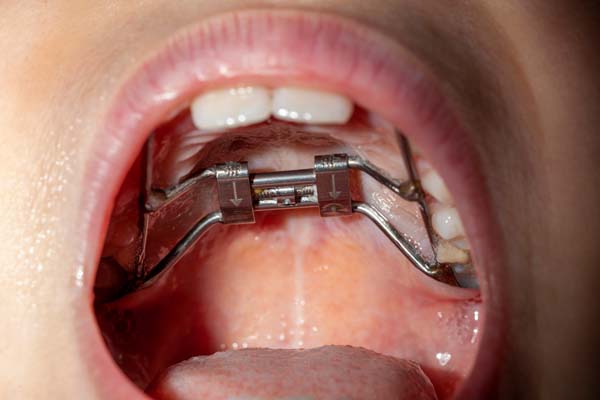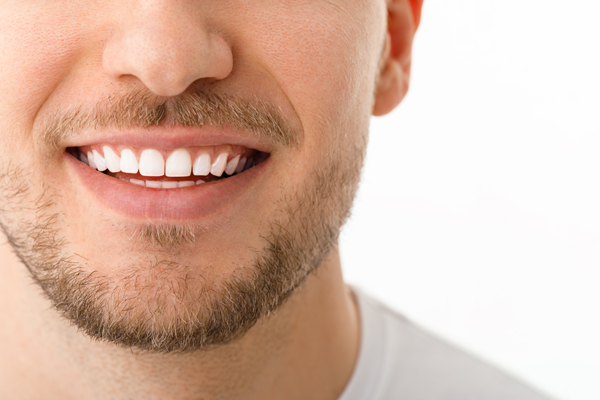When Is a Palatal Expander Necessary?

Sometimes, as they grow up, some children develop a narrow upper jaw. Having a narrow jaw can lead to dental problems down the road, such as bite problems or tooth decay. Palatal expanders may be able to help. Understanding narrow jaws can help your child receive the necessary care and improve the overall dental health they deserve. Continue reading to learn more about the conditions that may lead to a dental professional recommending a palatal expander as a treatment option.
What is a palatal expander?
A palatal expander is an orthodontic appliance that aims to widen the upper jaw by applying steady pressure on each side of the palate. This pressure pushes the two halves apart and widens the upper jaw over time. As the palate widens, new bone regenerates and fills the empty space. Depending on the severity of the narrow jaw, treatment can take anywhere between a few weeks to a year.
Orthodontists and other dental professionals often recommend them for children and adolescents whose jaws are developing. However, an adult can also get a palatal expander to widen a narrow jaw if they could not get treatment when they were a child. Expanders can be removable or fixed in place.
When a palatal expander is necessary
There are several reasons why a patient may need a palatal expander. The following includes the most common.
1. Crossbite
One of the most common reasons for a palatal expander is to treat a crossbite. A crossbite occurs when the upper teeth are located inside the lower teeth when the jaws are closed. This can cause problems with biting, chewing, and speaking. It can also lead to jaw pain and headaches. A palatal expander can help to widen the upper jaw and correct the crossbite.
2. Crowding
Crowding occurs when there is not enough space in the mouth for all of the teeth to fit properly. It can lead to crooked or misaligned teeth, which can cause problems with biting, chewing, and speaking. A palatal expander can help create more space in the mouth by widening the upper jaw, preventing crowding and allowing the teeth to come in properly.
3. Narrow arch
Some patients may have a narrow arch, which can cause problems with the alignment of the teeth and jaws. A narrow arch can also lead to breathing problems, as there may not be enough space for the tongue and airway. A palatal expander can help widen the arch, improving the alignment of the teeth and jaws and alleviating breathing problems.
4. Other bite issues
Patients may have other bite problems, such as an overbite or underbite, which can lead to teeth and jaw alignment issues. A palatal expander can help to correct bite problems by widening the upper jaw and improving the alignment of the teeth.
5. Speech problems
Issues with jaw and teeth alignment can contribute to speech problems. If the upper jaw is too narrow, it can cause problems with speech, such as a lisp or difficulty pronouncing certain words. A palatal expander can help to widen the upper jaw and improve speech.
6. Impacted teeth
Impacted teeth occur when teeth do not erupt properly and become stuck in the gums or bone. This can result from a lack of space in the mouth, which is treatable with a palatal expander. A palatal expander can create more space for teeth to erupt properly and prevent impaction by widening the upper jaw.
Call our office today
If you or your child are experiencing any of the above issues, a palatal expander may be an effective treatment option. Give our office a call today to schedule a consultation. Our team can help determine if a palatal expander is a right choice for you or your child's dental health. We can also answer any questions or concerns you may have.
Valley Ranch Orthodontics offers palatal expander treatment in the Irving area. Visit our website at https://valleyranchorthodontics.com or call our office at (972) 200-1016 to make an appointment.
Check out what others are saying about our services on Yelp: Read our Yelp reviews.
Related Posts
A smile makeover can transform the appearance of teeth, creating a more confident and attractive smile. This process involves a customized plan that corrects alignment issues, gaps, discoloration, and other cosmetic concerns. Each treatment fits individual needs and goals, ensuring the best possible results.A smile makeover is a plan to improve the overall look of…
Damon Braces can straighten your smile with less discomfort than traditional braces. These self-ligating braces use a special sliding mechanism that allows the wires to move freely, reducing friction and pressure on the teeth. Before starting treatment, it is important to understand how they work, their benefits, and what to expect.Damon Braces uses a built-in…
Clear aligners are a popular way to address orthodontic issues, such as crooked or crowding teeth. Over the years, the technology behind clear aligners has greatly improved, which has created competition when it comes to choosing aligners over the traditional route of metal braces. When having the teeth straightened with clear aligners, the entire process…
Orthodontic expanders optimize most of a child's natural teeth growing process by correcting or stopping malocclusions or misalignment. By progressively broadening the upper jaw, the palate expander assists an orthodontist in creating extra room in a child's mouth. Although the appliance may appear or sound intimidating at first, it works gradually and painlessly. Discover the…


